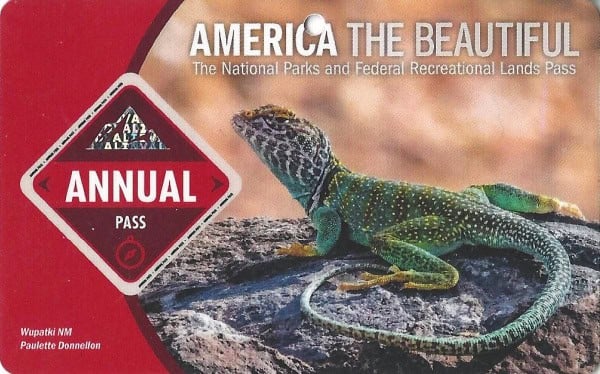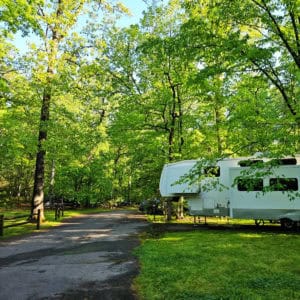George Washington Carver National Monument in southwestern Missouri protects and preserves the birthplace and memorial to a famed African American botanist.

George Washington Carver National Monument
George Washington Carver was born into slavery during the Civil War. He overcame countless obstacles in both getting his education and reaching professional advancement.
He worked to help poor southern farmers find alternatives to cotton. He is well known for promoting peanuts and its many uses.
He worked at Tuskegee Institute.
Today the park preserves the site of the small farm George Washington Carver was born on. The farm was owned by Moses and Susan Carver. His exact birthdate is unknown.
Established in 1943, it was the first unit of the National Park Service dedicated to an African American.

Visitor Center
The visitor center is the heart of the park. You can easily spend hours exploring all of the interpretive panels and educational information within the visitor center.
Plan to spend time learning more about not only George Washington Carver but also agriculture and his work with peanut butter.
Park Movie
You can watch the 26-minute film entitled, Struggle and Triumph The Legacy of George Washington Carver at the park or ahead of your visit.
Junior Ranger Program
The junior ranger program can be picked up at the visitor center. The park has a Plant Doctor activity booklet for ages 5 to 7 and a Scientist activity booklet available for ages 8 and older.
There is also an adult junior ranger program.
The Junior Ranger program is mainly filled out within the visitor center. It does take time to work your way through the displays and find all of the information.

Carver Trail
The Carver Trail is a 1-mile self-guided trail that includes the birth site of George Washington Carver, the Boy Carver Statue, the 1881 Moses Carver House, and the graves of Moses and Susan Carver.
Guided Ranger tours are offered daily at 10 am and 2 pm of the trail. The guided tours take an hour and 15 minutes and begin at the visitor center.

Things to know when planning a visit
Park Address: 5646 Carver Road, Diamond, MO 64840
Park Hours: open 9:00 AM to 5:00 PM daily, except Thanksgiving Day, December 25, and January 1
Entrance Fees: $0.00, There is no fee to visit the park
Learn more about National Park Passes for parks that have an entrance fee.
$80.00 - For the America the Beautiful/National Park Pass. The pass covers entrance fees to all US National Park Sites and over 2,000 Federal Recreation Fee Sites for an entire year and covers everyone in the car for per-vehicle sites and up to 4 adults for per-person sites.

Buy your pass at this link, and REI will donate 10% of pass proceeds to the National Forest Foundation, National Park Foundation, and the U.S. Endowment for Forestry & Communities.
National Park Free Entrance Days -Mark your calendars with the five free entrance days the National Park Service offers annually.
Camping: There is no camping at the park.
Lodging: There is no lodging at the park.
WiFi: Free WiFi is available at the visitor center.
National Park Service Website: https://www.nps.gov/gwca

National Park Sites near George Washington Carver NM
Wilson’s Creek National Battlefield (66 miles)
Pea Ridge National Military Park (69 miles)
Fort Scott National Historic Site (73 miles)
Fort Smith National Historic Site (140 miles)
Harry S Truman National Historic Site (160 miles)
Buffalo National River (195 miles)
Brown v Brown of Education National Historic Site (215 miles)
Ozark National Scenic Riverways (224 miles)
Oklahoma City National Memorial (229 miles)
Hot Springs National Park (266 miles)
Central High School National Historic Site (270 miles)
Ulysses S. Grant National Historic Site (272 miles)
Gateway Arch National Park (282 miles)
Ste. Genevieve National Historical Park (296 miles)
Nicodemus National Historic Site (418 miles)
Trail of Tears National Historic Trail
Check out all of the National Parks in Missouri and neighboring Illinois National Parks and Kansas National Parks, Iowa National Parks, Kentucky National Parks, Tennessee National Parks, National parks in Arkansas, Oklahoma National Parks, and National Parks in Nebraska.


For a fun adventure check out Escape Campervans. These campervans have built in beds, kitchen area with refrigerators, and more. You can have them fully set up with kitchen supplies, bedding, and other fun extras. They are painted with epic designs you can't miss!
Escape Campervans has offices in Vancouver, Seattle, Portland, San Francisco, Las Vegas, Los Angeles, Phoenix, Salt Lake City, Denver, New York, and Orlando
Make sure to follow Park Ranger John on Facebook, Instagram, Pinterest, and TikTok





Leave a Reply